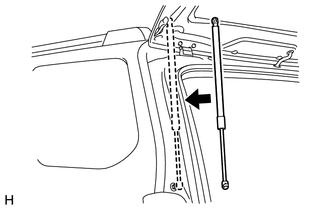Toyota 4Runner: Back Door Support
Components
COMPONENTS
ILLUSTRATION
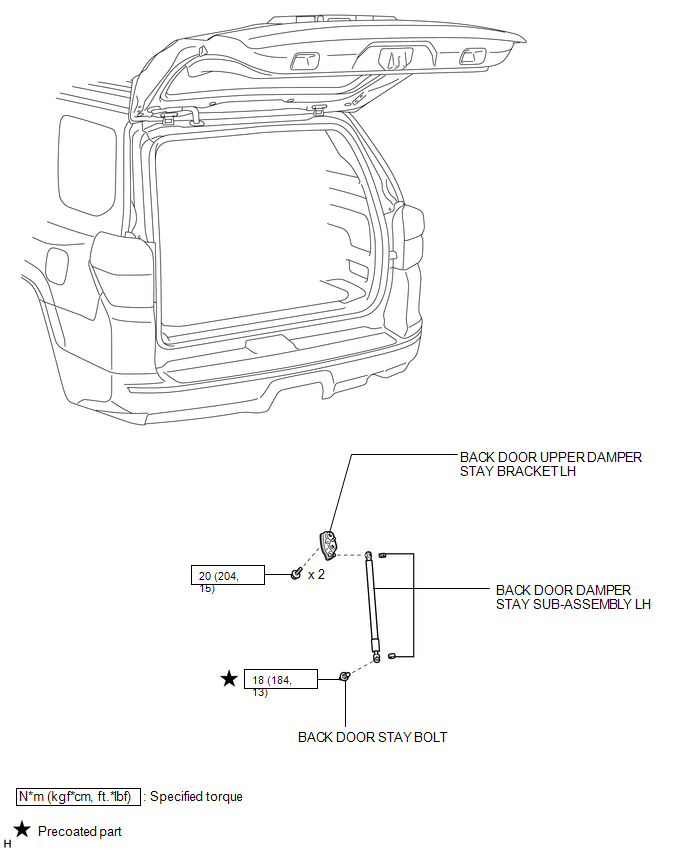
Removal
REMOVAL
PROCEDURE
1. REMOVE BACK DOOR DAMPER STAY SUB-ASSEMBLY LH
NOTICE:
- Avoid touching the piston rod as much as possible to prevent foreign matter from attaching to it. Be sure to hold the cylinder while servicing the vehicle.
- Do not wear cotton gloves or other similar materials when handling the piston rod. Fibers may attach to the rod and result in gas leaks.
- In order to prevent the piston rod from deforming, do not apply any horizontal load to the door damper stay.
|
(a) Using a screwdriver, remove the stop ring along the groove. HINT: Tape the screwdriver tip before use. Text in Illustration
|
|
(b) Release the ball joint and remove the back door damper stay sub-assembly.
NOTICE:
Remove the back door damper stay sub-assembly while supporting the back door by hand.
2. REMOVE BACK DOOR STAY BOLT
|
(a) Remove the back door stay bolt. NOTICE: If the hood support is detached from the ball joint, it becomes non-reusable. Therefore, do not detach the hood support from the ball joint unless replacing it. |
|
3. REMOVE BACK DOOR UPPER DAMPER STAY BRACKET LH
|
(a) Remove the 2 bolts and back door upper damper stay bracket. |
|
Disposal
DISPOSAL
PROCEDURE
1. DISPOSE OF BACK DOOR DAMPER STAY SUB-ASSEMBLY LH
(a) Secure the back door damper stay sub-assembly horizontally in a vise with the piston rod pulled out.
|
(b) Wear safety glasses. Using a metal saw, slowly cut a groove between A and B shown in the illustration to release the gas. Standard:
CAUTION: Although the gas inside the back door damper stay sub-assembly is colorless, odorless and harmless, metal debris may scatter. Therefore, cover the back door damper stay sub-assembly with a piece of cloth or other material. |
|
Installation
INSTALLATION
PROCEDURE
1. INSTALL BACK DOOR UPPER DAMPER STAY BRACKET LH
|
(a) Install the back door upper damper stay bracket with the 2 bolts. HINT: Tighten the bolts in the order shown in the illustration. Torque: 20 N·m {204 kgf·cm, 15 ft·lbf} |
|
2. INSTALL BACK DOOR STAY BOLT
(a) Clean the threaded portion on the vehicle body with a non-residue solvent.
(b) Apply adhesive to the threads of the bolt.
Adhesive:
Toyota Genuine Adhesive 1324, Three Bond 1324 or equivalent
|
(c) Install the back door stay bolt. Torque: 18 N·m {184 kgf·cm, 13 ft·lbf} |
|
3. INSTALL BACK DOOR DAMPER STAY SUB-ASSEMBLY LH
NOTICE:
- Avoid touching the piston rod as much as possible to prevent foreign matter from attaching to it. Be sure to hold the cylinder while servicing the vehicle.
- Do not wear cotton gloves or other similar materials when handling the piston rod. Fibers may attach to the rod and result in gas leaks.
- In order to prevent the piston rod from deforming, do not apply any horizontal load to the door damper stay.
|
(a) Install a new back door damper stay sub-assembly. NOTICE:
|
|
 Back Door Opener Switch
Back Door Opener Switch
Components
COMPONENTS
ILLUSTRATION
Disassembly
DISASSEMBLY
PROCEDURE
1. REMOVE ASSIST STRAP HOLE COVER
2. REMOVE ASSIST STRAP ASSEMBLY
3. REMOVE BACK DOOR TRIM PANEL ASSEMBLY
4 ...
 Front Door
Front Door
...
Other materials about Toyota 4Runner:
Inspection
INSPECTION
PROCEDURE
1. INSPECT FRONT POWER SEAT SWITCH LH
(a) Measure the resistance according to the value(s) in the table below.
Standard Resistance:
Slide Switch
Tester Connection
Switch Condition
Specified Conditi ...
Dtc Check / Clear
DTC CHECK / CLEAR
1. CHECK DTC
(a) Connect the Techstream to the DLC3.
(b) Turn the ignition switch to ON and turn the Techstream on.
(c) Enter the following menus: Body Electrical / Trouble Codes.
(d) Check for DTCs.
2. CLEAR DTC
(a) Connect the Techst ...
0.0134

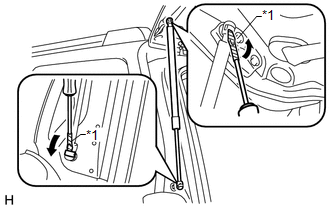
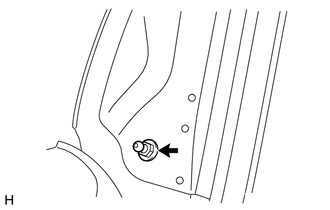
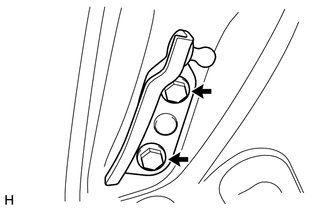
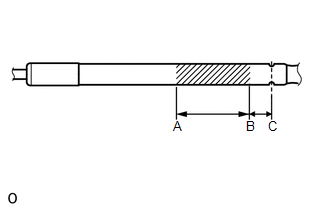
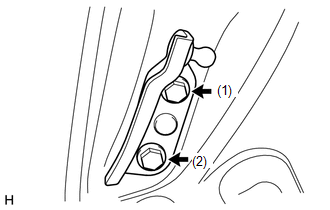
.png)
